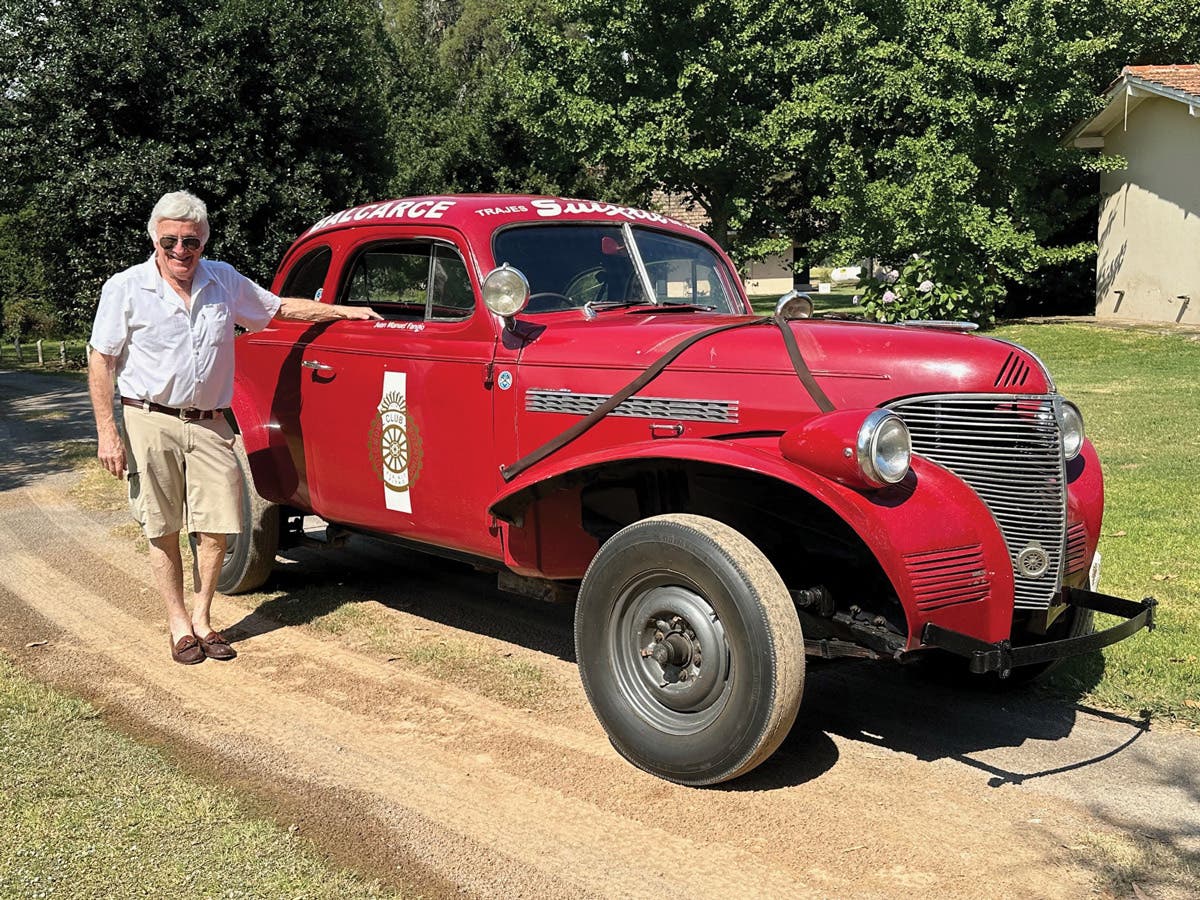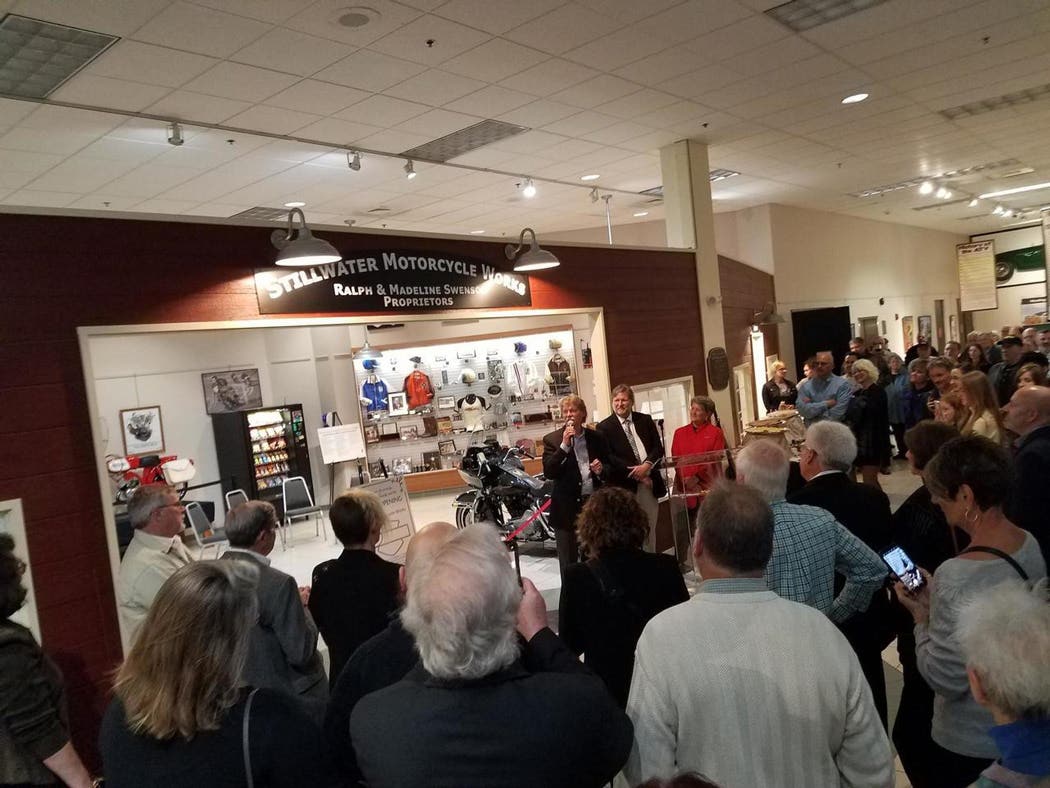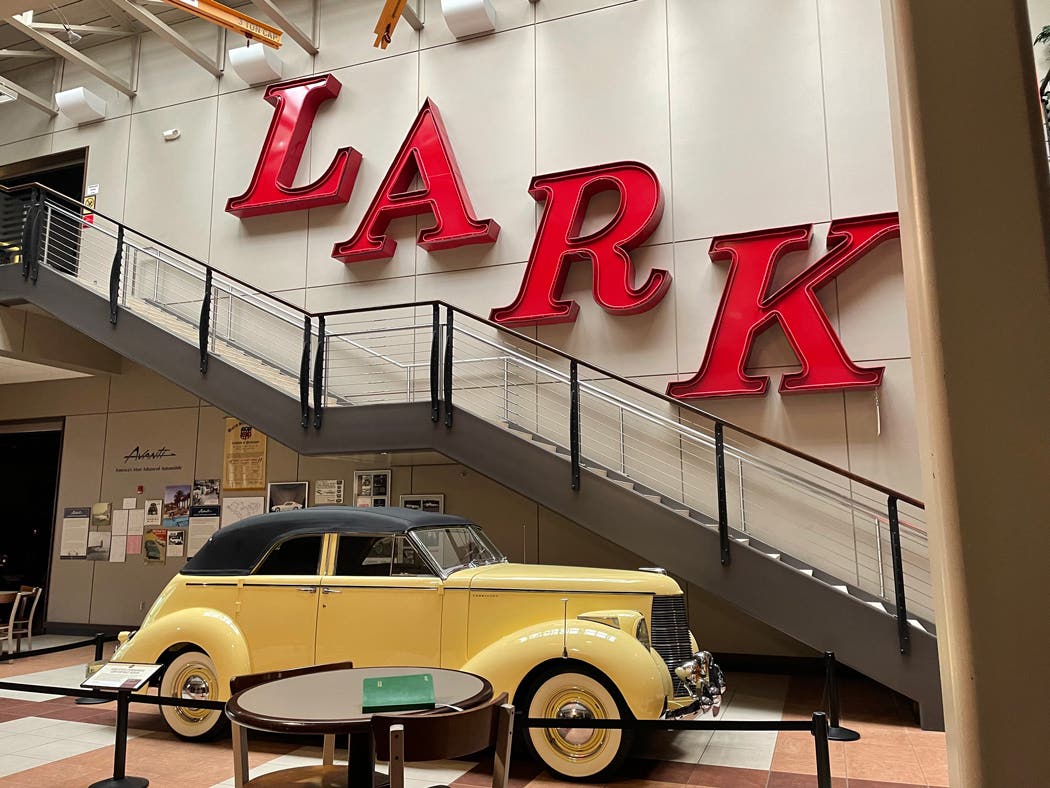You’d think most carmakers would want to have their own museum. But with the exception of The Henry Ford in Dearborn, Mich., major American automaker’s museums have either closed, or their collections generally aren’t open to the public. In contrast, the top European car companies offer incredible museums, usually located adjacent to their manufacturing facilities. Proud of their heritage, they invite you to experience their history, examine the cars that made them famous and learn more about innovations they pioneered. Porsche, Mercedes-Benz, Volkswagen and BMW, to name a few, have memorable “Garage Mahals.”
Volvo recently followed suit with a stunning, state-of-the-art structure in Gothenburg, Sweden, about 250 miles north of Stockholm. The tall, circular building is a soaring framework of light-colored, curved “glulam” timber (glue/laminated — get it?), a Scandinavian wood product made up of multiple layers of dimensional lumber bonded by moisture-resistant structural adhesive. Computer-controlled fabrication ensures the curved glulam pieces are precisely cut. Metal connectors inside the wooden beams make for rigid construction. The floor slabs are made of locally sourced CLT (cross-laminated timber). Tall, floor-to-ceiling windows keep the museum’s interior light and airy. The architects said they “...pushed the boundaries of timber construction.”
The new World of Volvo museum has three major sections with numerous interactive exhibits and about 50 cars and trucks. You can experience how distractions affect your ability to drive at one station; test your skill and balance on a bus simulator; watch some of Volvo’s epic TV commercials and ads; learn how lambda sensors save lives; understand a key Volvo innovation, the three-point safety belt; follow the progress of electrification; and watch Volvo’s founders come to life on film, working together at the same desk nearly 100 years ago.
At the entrance is a handsome 1946 PV60, the last six-cylinder Volvo equipped with a flathead engine. The PV60 was considered outdated when it was introduced (fashions had changed during the war), but the car was very comfortable and surprisingly popular. They were not sold in the United States. The museum’s rare, royal-blue example is owned by His Majesty King Carl XVI. It was a gift from the Swedish people and Volvo to celebrate the king’s birthday on April 30, 1996. The car and the king are the same age, and the big, blue sedan was driven on the first King’s Rally in August 1997. Leave it to the democratic Swedes to give a car to their monarch.
World of Volvo encompasses everything you want to know about the Swedish safety stalwart. As a motorcar company, Volvo began in 1926, so they are nearly a century old. The firm was initially underwritten by SKF, a renowned ball-bearing manufacturer. The name Volvo, in Latin, literally means “I roll.” Although Sweden’s frigid temperatures should have dictated an initial volume of snug, closed PV4 sedans, nearly half of the first run of Volvos were OV4 open touring models. There’s a well-preserved OV4 example on display.
Another early Volvo that caught my attention was the PV36 Carioca. Built from 1935 until 1938, the streamlined Carioca resembled the Chrysler Airflow with a dash of Hupmobile Model J Aerodynamic thrown in. The lively Carioca dance, from Brazil, was reportedly popular in Sweden at the time. Many Volvo engineers had been trained in the U.S. and the PV36’s engine was a 3.7-liter flathead inline six-cylinder. The car also had independent front suspension, a first for Volvo. Just 500 examples were sold — the stolid Swedes didn’t like the Airflow’s streamlining any more than Chrysler buyers did. Sweden remained neutral during World War II, so during the war Volvo continued to manufacture a 90-bhp, five-passenger model called the PV60 despite dealing with acute materiel shortages.
When the war ended, Volvo offered the nimble PV444, which resembled a slightly shrunken 1946-1948 Ford Tudor. It was sold in the States from 1954-1959 and evolved into the PV544. Thanks to its familiar styling, a lusty little twin-carb 1.6-liter 85-bhp I-4 and, eventually, a four-speed gearbox, Americans bought PV544s in droves. The more stylish 122S Amazon sedan that followed became the third-best-selling import model in the United States.
True to its Swedish roots, Volvo has always touted safety, and value. And the company’s clever print advertising showed six other Volvo sedans on top of a 240 to emphasize its rugged roofs and overall strength. Volvo’s sturdy station wagons competed with Peugeot 404s and 504s in the United States and edged out their French rivals on volume. Curiously, many wealthy people bought Volvo wagons, transcending class barriers. Volvos were considered practical, sensible and even a little chic, like Birkenstock sandals on wheels. Ads for the 740 Turbo Volvo wagon showed it with a Porsche 944 and quipped, “To a Radar Gun, They Look Exactly Alike.” The closest thing to a custom Volvo GT was the 780 coupe that was restyled by Carrozzeria Bertone with a low, chopped top and a performance upgrade. Not many were sold.
On the even sportier side, Volvo introduced the tightly drawn P1800 coupe back in 1961. It was based upon a prototype by Carrozzeria Frua (with input from Ghia) that had been shown two years prior. The P1800’s stylish bodies were initially assembled in England by Jensen, and the classy GT coupe starred in the popular TV drama “The Saint” starring Roger Moore as Simon Templar (Moore was later cast as James Bond). By 1964, the speedy 110-mph P1800 coupes were being built in Sweden. Toward the end of that model’s range, Volvo sold the P1800ES, a two-door shooting brake (station wagon) with an extended roofline.
Here in the States, the P1800 became the basis for the most well-travelled Volvo of all time: a red coupe owned by genial Long Island schoolteacher Irv Gordon. The doughty Mr. Gordon parlayed his long daily commute into an astounding 3,200,000-mile Guinness driving record, culminating in a trip to Anchorage, Alaska! Over time, Irv’s hard-charging P1800 had an engine rebuild and some sprucing up, but the car was largely original. I met Irv several times (he died in 2006), so seeing his coupe prominently displayed in the new World of Volvo museum was a delight. Irv liked to say that he “...met wonderful people everywhere he drove,” as he piled up his incredible mileage. He became an official ambassador for Volvo, and his perennial smile and virtually unstoppable red P1800 became the stuff of legends.
Volvo also owns “The Saint’s” original white P1800 and the Frua prototype. They’re stored in a “secret” building near the Gothenburg factory that holds hundreds of vintage Volvos, with many awaiting their turn in the new museum. Hans Hedberg, Heritage Manager of the museum, looks after Volvo’s antique fleet and he kindly let us drive a few specimens. The Frua P1800 prototype will be on display at the Pebble Beach Concours d’Elegance this August in a special class honoring Frua coachwork. It’s the first time a Volvo will have appeared on the lawn, but it may not be the last.
But this column is about hot rods, and there’s one in the World of Volvo museum. Bogi Lateiner is an American TV personality and the founder of Girl Gang Garage, a team of women who restore old cars. Lateiner found a 1961 Volvo PV544 on a farm near Phoenix, Ariz., and asked Volvo to supply an engine. Volvo did better than that. The company gave Bogi a complete S60 T8 plug-in hybrid. Approximately 160 women worked on this project, rotating in teams over 18 months, building this pudgy mauve machine. Under those bulging fenders are wider tires and contemporary disc brakes. It’s an electric hot rod, right in step with the latest trend toward total auto electrification, not to mention it’s setting a fine example for women who want to be mechanics and restorers. Fewer than 10 percent of the mechanics in the U.S. today are women — perhaps this effort will encourage more ladies to consider being a technician?
Consider this: Sweden is home to countless car enthusiasts, and many of them love American iron, particularly customs and muscle cars. The summers are too short, but a surprising number of American muscle cars have made their way to Scandinavia. Some aficionados over here wear leather jackets and even sport slicked-back hair. The muscle car culture has a name — raggare, typically translated as “greaser” — but the term comes from a Swedish verb meaning “to pick up girls,” and the Swedes rival Cuba with their deification of American cruising culture. But the World of Volvo museum, with exception of the Girl Gang display, steers clear of hot rods and customs, so you’ll have to travel outside of Stockholm and Gothenburg to get your hot rod fix.
Visit https://www.worldofvolvo.com/en/to learn more about their wonderful musuem.
Love Imports? Here are a few more articles for your reading enjoyment.
If you like stories like these and other classic car features, check out Old Cars magazine. CLICK HERE to subscribe.
Want a taste of Old Cars magazine first? Sign up for our weekly e-newsletter and get a FREE complimentary digital issue download of our print magazine.








